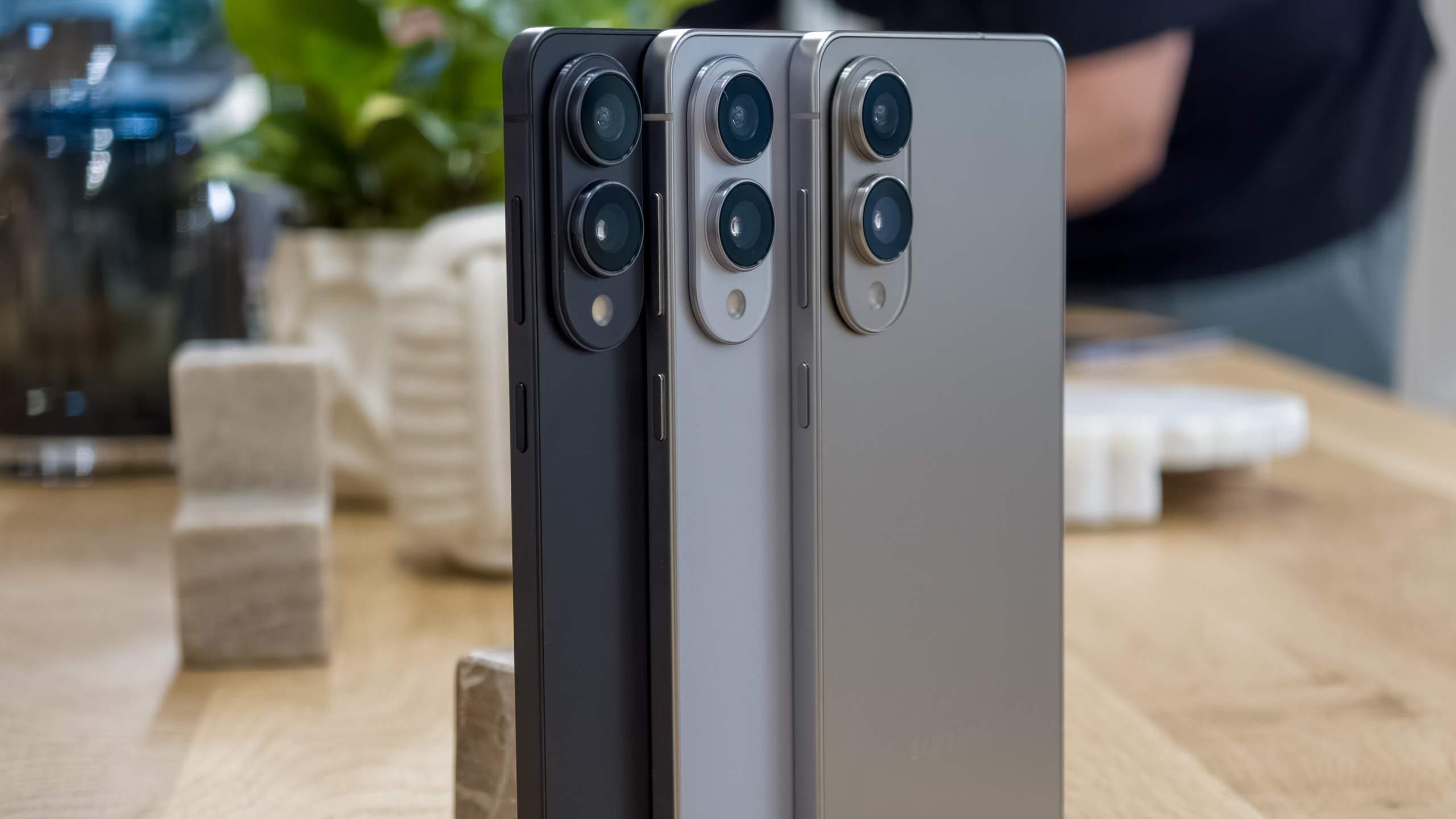The Galaxy S8 has face recognition and iris scanning, and you have to choose one

The Galaxy S8 contains more ways than ever to keep your content safely locked behind a password: in addition to the traditional PIN, pattern or password option (cumulatively the most secure), there's fingerprint recognition, iris scanning (which debuted on the Galaxy Note 7) and, oldie-but-goodie, face recognition.
In the beginning...
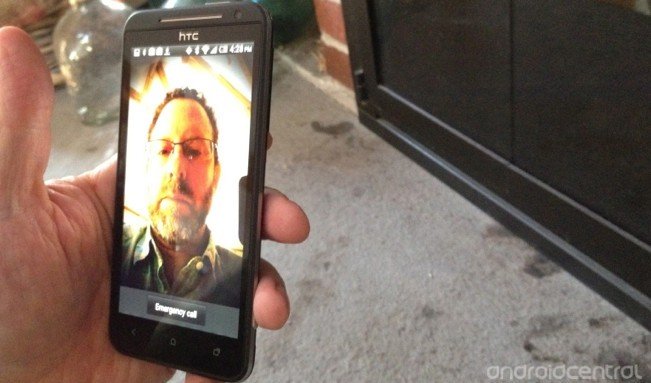
Back in 2011, Google debuted support for face recognition as an unlock option on select devices. It was available on phones like the Galaxy Nexus, HTC EVO 4G LTE and HTC One X, but eventually manufacturers stopped supporting it because it didn't work very well.
The idea of face recognition is a good one: all phones have a front-facing camera, and all (most) people have unique faces, and phones are computers that can figure out that the person stored in the phone is the same one holding his or her phone in front of the camera. But two things stopped it from gaining popularity: for a long time, front-facing cameras had small, low-quality sensors, making them slow and generally terrible in poor lighting. You need your unlock method to work all the time, not just in particular lighting. The second reason is less obvious: the proliferation of fingerprint sensors made alternative forms of fast-but-relatively-safe unlock methods less necessary.
Then came Smart Lock
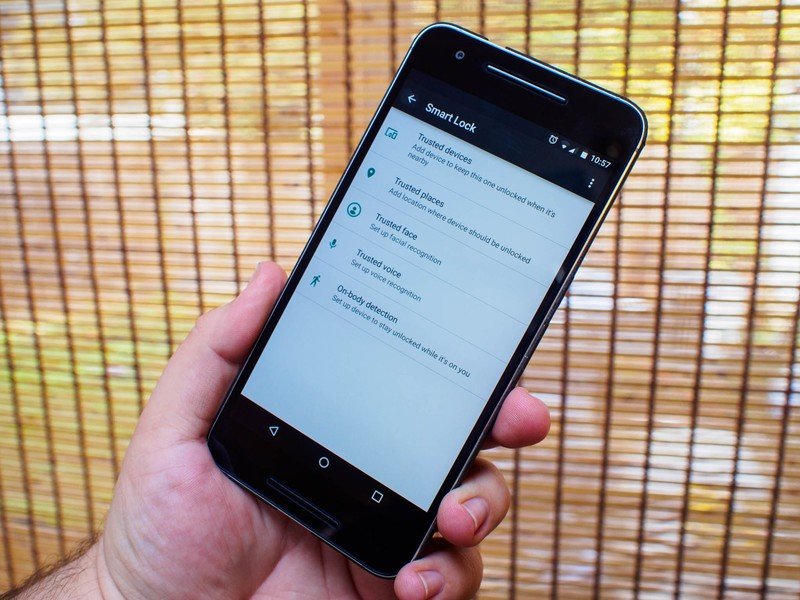
When Lollipop debuted in 2015, Google created something called Smart Lock, a service across its major platforms (Android, Chromebooks, and Chrome OS) to make it easier for people to unlock their devices without passwords. On Android, that early and little-used face recognition feature that debuted in 2011 eventually became just another part of Google Play Services alongside on-body detection, trusted voice, trusted places, and trusted devices. But still, even today, very few people use it.
Fingerprint sensors made face unlock less necessary — and way less popular. Until now.
To be fair, Google's implementation hasn't always been very good — in fact, it's still pretty unreliable on most phones — but most people don't even know it's there, buried as it is within Google's Play Services. It's also not included on every device, which makes advertising the feature a hit-and-miss affair. Trusted places — your house, or workplace — uses location, which is more easily detectable, and trusted devices allows a smartwatch or other Bluetooth device to act as a nearby authenticator. Again, super simple. With fingerprint sensors being integrated on most devices, facial recognition just isn't that necessary.
What's old is new(s) again

When the Galaxy Note 7 was released last year, it arrived with a fair amount of buzz surrounding its iris scanner. But because the scanner actually matched the details from the inside of your eye against a stored copy — which is nearly impossible to duplicate or imitate — it worked slowly, and often failed. So Samsung decided to bring back the face scanner in the Galaxy S8, and improve upon Google's implementation in a number of ways.
The Galaxy Note 7's iris scanner failed a lot. But it was still a great idea worth pursuing.
Face scanning works by taking a photo of your whole face, and using the front-facing camera to match specific details to the live photo in front of it. On the Galaxy S8, this works incredibly quickly — far quicker than any other face unlock method, and often more quickly than the fingerprint sensor — for a couple of reasons. First, the Galaxy S8 is just plain fast — its Snapdragon 835 or Exynos 8895 chips have incredibly advanced image signal processors that perform the work in a fraction of the time it took just a few years ago. And the 8MP front-facing camera inside the Galaxy S8, which has autofocus and is therefore much more likely to find a subject lock.
Get the latest news from Android Central, your trusted companion in the world of Android
But as you may have seen plastered around the internet, face recognition is not foolproof. Indeed, it's fairly easy to spoof if you have a high-resolution photo of the subject, and some persistence. This isn't to say that opening Facebook and showing a photo of your friend to his phone while he's in the bathroom will unlock it (let's be honest, too, he's bringing that phone with him to the bathroom) but Samsung doesn't recommend you use face unlock if you have sensitive material on the phone.
That said, it's so fast, and much more likely to find a match in low-light situations, a common scenario that Note 7 owners found themselves frustrated by with the iris scanner last year.
Focusing on the iris
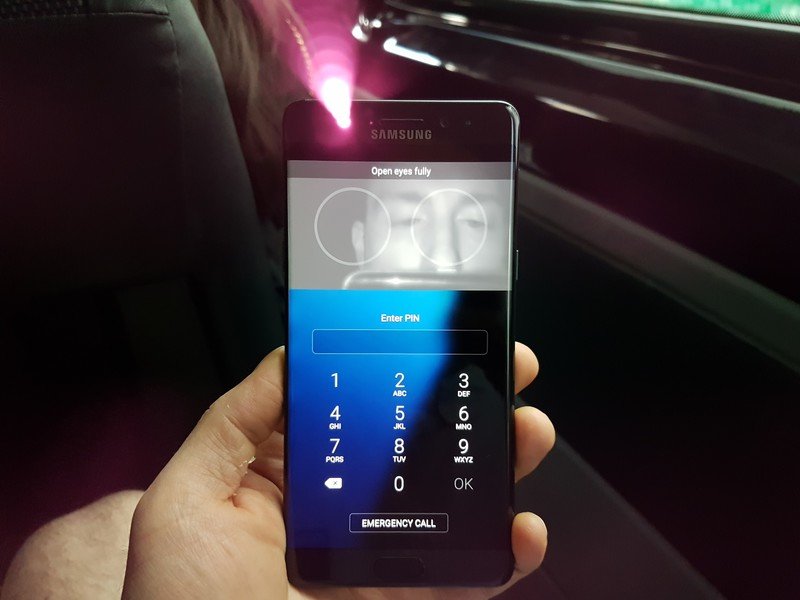
Iris scanning is a more secure form of biometric authentication, and is likely more secure than a fingerprint since it is basically impossible to recreate, even using the most advanced methods.
The iris scanner has made a return to the Galaxy S8 after it ignominiously disappeared in the Note 7 last fall. It's also much, much faster than before — which is good, because the damn thing needed it.
Iris scanning on the Galaxy S8 is at least twice as fast as the Note 7, and fails less in low light. In other words, you'll want to use it.
On the Galaxy S8, I've found iris scanning to be very reliable and quite fast most of the time, though not as instantaneous as a fingerprint sensor or face unlock. That said, I've been impressed with its ability to unlock in low light — the iris scanner likely uses a combination of the dedicated infrared sensor and front-facing camera to get a match — which had led to considerably fewer moments of frustration.
I've also noticed that the iris scanner, while it still needs to have your eyes in its sights, doesn't need to be perfectly aligned the way the Note 7's did; I can have my hands close to my chest and tilt the phone up towards me, and as long as my eyes are in the viewfinder it unlocks most of the time. It's still not perfect, and I occasionally find myself having to find the fingerprint sensor to finish the job, but it's rare.
You can only choose one
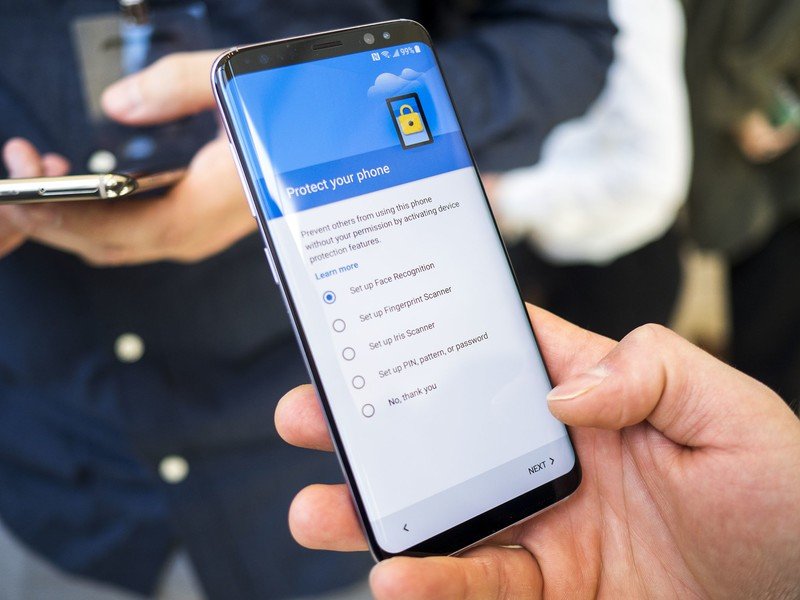
For safety reasons, you can only choose one method of facial unlocking on the Galaxy S8: face recognition or iris scanning.
- If you're concerned with security above all else, use the iris scanner.
- if you're concerned with speed above all else, use the face recognition.
Of course, either of these methods can be combined with the existing fingerprint unlock, which despite being on the back is fairly easy to reach and may end up being faster than either. The main upside to the visage-based methods is that you don't have to poke around on the back of the phone for the fingerprint sensor; you can merely turn on your phone, look at the camera, and go.

Daniel Bader was a former Android Central Editor-in-Chief and Executive Editor for iMore and Windows Central.
